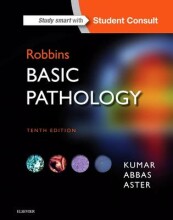Hemodynamic Disorders, Thromboembolism, and Shock
28 important questions on Hemodynamic Disorders, Thromboembolism, and Shock
Definition colloid osmotic pressure
What are the causes of increased egress of water at the capillary level?
- Increased pressure at the venous end (cardiac failure, blockades)
- Increased permeability (inflammation, neurogenic)
- (Increased pressure arterial end (almost never!))
What are the causes of decreased return of fluid from the interstitium?
- Higher grades + faster learning
- Never study anything twice
- 100% sure, 100% understanding
What are the causes of a blocked flow of lymph?
- Iatrogenic
- Tumour
What are the types of hemorrhages?
- Petechiae (up to 1 mm): thrombopenia, -pathy, vasculitis
- Purpura (slightly bigger): vascular malformations, vasculitis
- Ecchymoses: (1-3cm) trauma (sometimes + above), a.o.
- Hematoma: Trauma, vasc. Malf. (by AC of HT)
What are the 4 outcomes of a thrombus?
- Resolution
- Embolization to lungs
- Organized and incorporated into wall
- Organized and re canalized
What are the types of emboli?
- Thrombus
- Fat/bonemarrow
- Amniotic fluid
- Tumour
- Foreign body material
- Parasites/eggs
Which types of shock exist?
- Cardiogenic shock (prognosis variable)
- Hypovolemic shock (prognosis OK, if treated adequately
- Septic shock (prognosis poor, 20-30% mortality)
- Heterogenic rest group (incl. neurogenic shock, anaphylactic shock) (prognosis variable)
What are the signs of shock?
What is the color of congested tissue?
What are the steps of hemostasis?
- Arteriolar vasoconstriction
- Primary hemostasis
- Secondary hemostasis
- Clot stabilization and resorption
Describe clot stabilization and resorption
Which two types of granules exist in platelets?
What is the role of aspiring in hemostasis?
Function prothrombin time (PT) assay
Function partial thromboplastin time (PTT) assay
How is coagulation restricted?
- limiting enzymatic activation to phospholipid surfaces provided by activated platelets or endothelium,
- circulating inhibitors of coagulation factors, such as antithrombin III, whose activity is augmented by heparin-like molecules expressed on endothelial cells
- expression of thrombomodulin on normal endothelial cells, which bind thrombin and convert it into an anti-coagulant,
- activation of fibrinolytic pathways (e.g., by association of tissue plasminogen activator with fibrin).
Function protein C
Function heparin-like molecule
Definition endothelial activation/dysfunction
With what deep venous thromboses is associated?
What are the consequences of gas bubbles?
When embolus causes tissue infarction?
When fat embolism occur?
Which factors determine the damage of an occlusion?
- Anatomy of vascular supply
- Rate of occlusion
- Tissue vulnerability to hypoxia
What is the major cause of an infarct?
What are the major pathological factors in septic shock?
- Inflammatory and counterinflammatory responses.
- Endothelial activation and injury
- Induction of a procoagulant state
- Metabolic abnormalities
- Organ dysfunction
What are the characteristics of septic shock ?
- endothelial cell activation
- vasodilation
- edema
- disseminated intravascular coagulation
- metabolic derangements
The question on the page originate from the summary of the following study material:
- A unique study and practice tool
- Never study anything twice again
- Get the grades you hope for
- 100% sure, 100% understanding
































